Research Center Hosts 2nd Annual Soil Festival for TISD Fifth Grade Gifted and Talented
February 2009
On February 4, 2009 over 50 fifth-grade gifted and talented Temple ISD students visited the Grassland, Soil, and Water Research Lab and Blackland Research Center for the 2nd Annual Soil Festival. While at the research station, students learned about many aspects of soil including soil formation, soil texture, the compost cycle, water quality, the soil food web and agricultural equipment used for tilling the soil. Scientists from the center presented the students with information about the soil, and students were given the opportunity for hands-on learning at each of the learning stations.
At the Soil Formation learning station presented by Dr. Virginia Jin, students learned about the nine different soil orders which can be found across Texas. Students were able to view cross-sections of the nine soil profiles and compare the soil similarities and differences . The factors of soil formation were discussed in relation to climate, parent material, topography, biology and time.
At the Soil Texture learning station presented by Evelyn Steglich and Todd Marek, students learned how to determine the type of soil by sieving soils through graduated sieves and estimating the percent of sand and clay present in the soil.
From this estimate they used a Soil Texture Triangle to determine what type of soil the sample was. Students also learned how to determine in the field whether a soil contains more sand or clay by ribboning the soil sample. Each student was given the opportunity to practice ribboning a soil sample and determine if the soil contained more clay or sand.
At the Compost Cycle learning station presented by Dr. Dennis Hoffman, Dr. June Wolfe and Steve Potter, students learned what type of items from their homes could be used to create compost material which could then be used in the garden. Students were able to feel and examine compost at different stages as well as examine the organisms helping to create the compost.
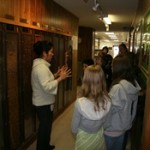
Dr. Virginia Jin discusses the nine soil orders of Texas and the factors of soil formation.
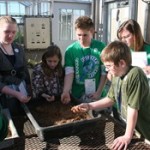
Students learn to ribbon the soil to determine whether the soil contains more clay or sand
At the Water Quality learning station presented by Dr. Daren Harmel and Anne Gibson, students learned about the importance of soil-water interactions. Students tested water samples from Salado Creek, the Middle Bosque River and tap water and determined the pH, turbidity and dissolved oxygen in each sample.
At the Agricultural Equipment learning station presented by Dr. Rick Haney and Ron Whitis, students learned about the equipment needed for tillage and care of the soil as well as other equipment used in agricultural research. Students learned the importance of tillage and its role in maintaining a good seed bed for successful crop growth.
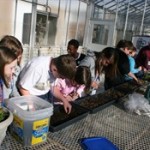
Students learn about items found in their homes which can be used for composting.
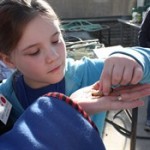
Students examine organisms which help in creating the compostStudents examine organisms which help in creating the compost
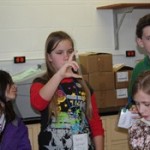
Students tested water samples for pH, turbidity and dissolved oxygen.
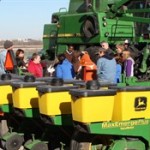
Dr. Rick Haney shows a group of fifth graders the equipment used in agricultural research.
At the Soil Food Web learning station presented by Dr. Wayne Polley and Dr. Phil Fay, students learned about the diversity of life in soils. Students were able to view soil samples from a wheat field and from a never-plowed native prairie. From these samples, students could visualize the differences in soil color and texture, and examine different numbers and types of organisms present in the two soils.
After participating in the learning stations, students gathered for a question and answer session where they were given the opportunity to ask questions to the scientists relating to the individual learning stations as well as research and science in general. Overall, the students and teachers enjoyed the demonstrations and hands-on opportunities and seemed eager to implement the information in their classroom activities.
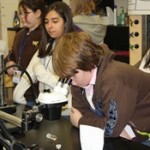
Fifth grade gifted and talented student examines microorganisms found in soil samples.
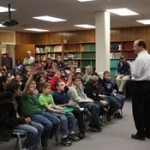
Jeff Arnold, scientist and director of lab, addresses students’ questions about soils and research in general.
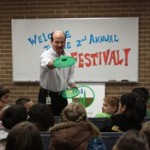
Students received frisbees for answering Dr. Arnold’s questions.
